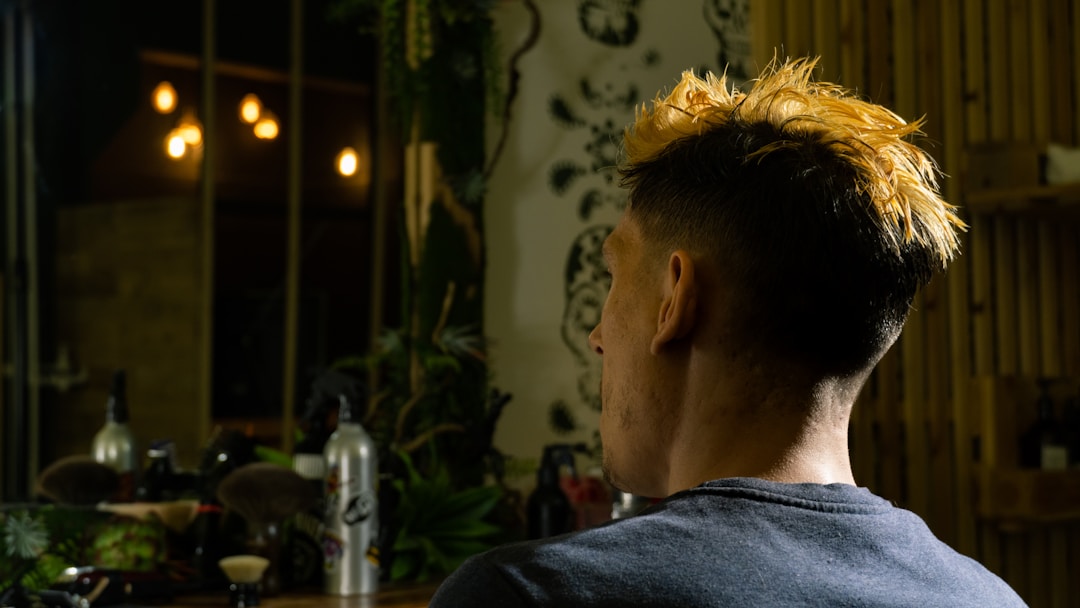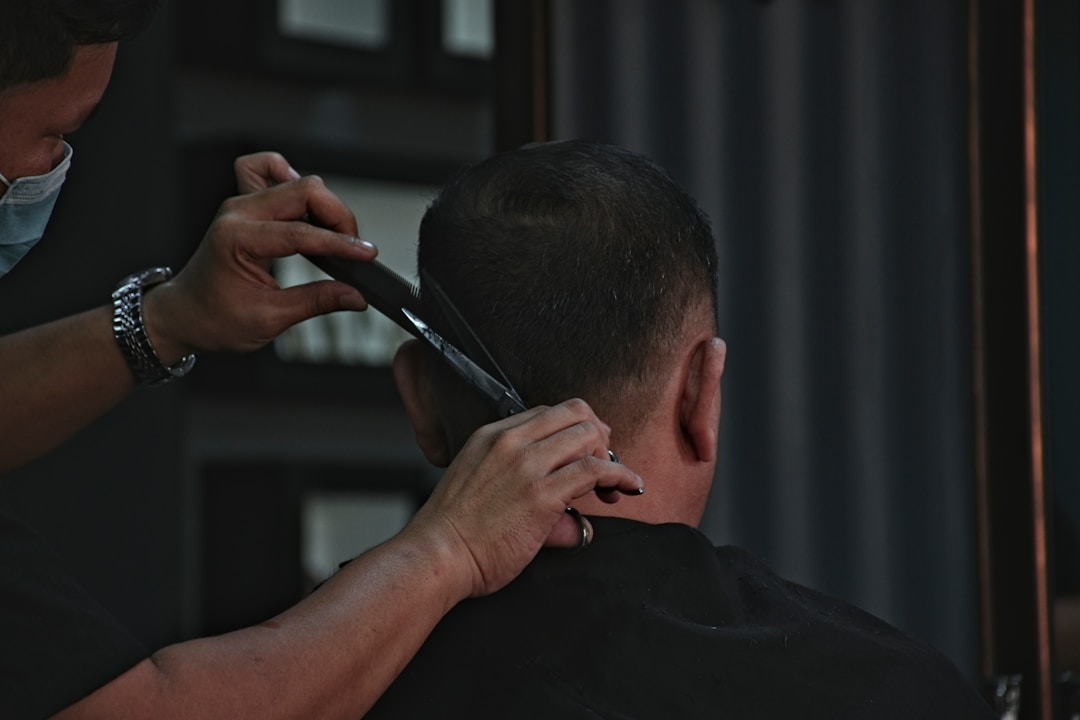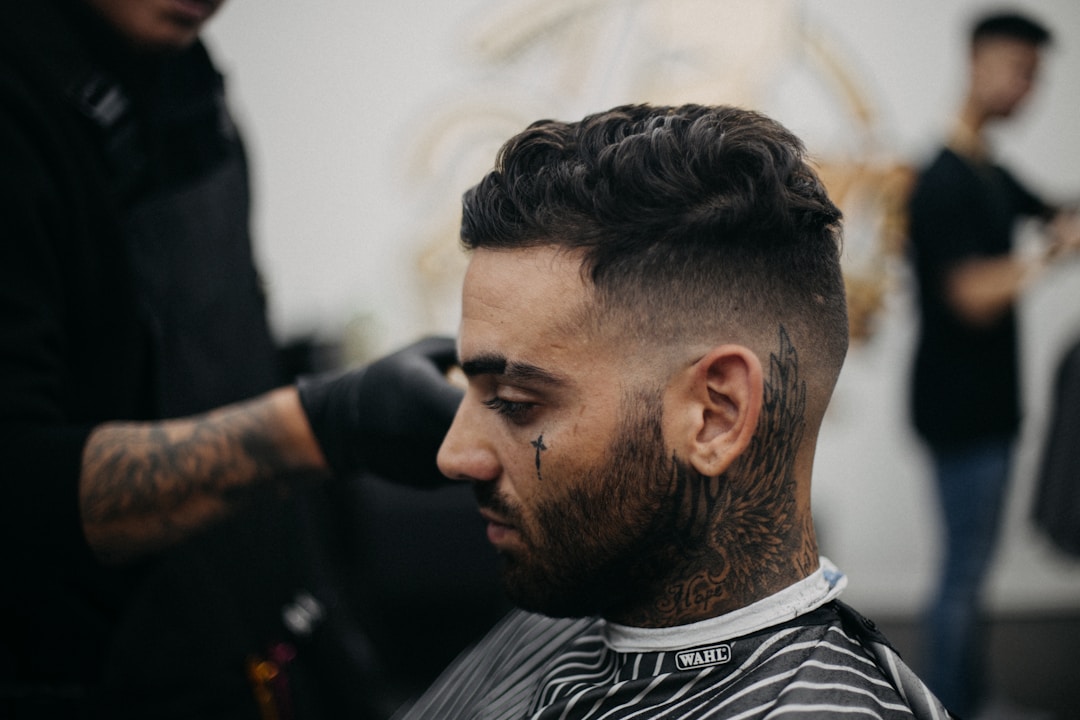Low Fade vs Mid Fade Cost Comparison 2025: Complete Price Analysis
Complete cost comparison between low fade and mid fade haircuts. Price differences, maintenance costs, longevity analysis, and value breakdown from Queens NYC expert barbers.

When choosing between a low fade and mid fade, cost considerations extend beyond simple per-cut pricing. While the sticker price difference appears minimal—typically $3-8 per appointment—the complete cost picture includes maintenance frequency, longevity, styling product needs, and long-term value optimization. Understanding the total cost of ownership for each fade style helps you make financially informed decisions that balance budget constraints with style preferences.
At DIDA NYC Hair Studio in Queens, we've tracked cost data across thousands of low fade and mid fade appointments. This comprehensive analysis reveals the true financial differences between these popular styles, helping you optimize your grooming investment while achieving the look that best suits your face shape and lifestyle.
Per-Cut Price Comparison: Low Fade vs Mid Fade
Queens NYC Market Pricing (2025)
Current market rates in Queens reveal consistent but modest price differences between low and mid fade haircuts across quality tiers.
Price Breakdown by Shop Tier
Budget Barbershops
Low Fade: $25-35
Average: $30
Mid Fade: $28-38
Average: $33
Price Difference: $3 per cut
Mid-Tier Professional Shops
Low Fade: $40-55
Average: $47
Mid Fade: $43-58
Average: $50
Price Difference: $3 per cut
Premium/Master Barber Shops
Low Fade: $55-75
Average: $65
Mid Fade: $60-80
Average: $70
Price Difference: $5 per cut
Key Insight:
Mid fades consistently cost 10-15% more than low fades at the same shop, averaging $3-5 extra per cut. This premium reflects additional complexity in blending and slightly longer execution time.
Why Mid Fades Cost More
The price premium for mid fades isn't arbitrary—specific technical factors justify the additional cost.
- •
Increased Blending Complexity
Mid fades require blending across a larger surface area (from mid-temple to crown) compared to low fades (ear-level to crown). This demands more guard transitions and precision work.
- •
Longer Execution Time
Professional mid fades take 35-45 minutes vs. 30-40 minutes for low fades. The extra 5-10 minutes reflects additional blending passes and detail work.
- •
Higher Skill Requirement
Mid fade blending is more visible from front-facing angles, requiring superior technique to avoid obvious lines. Master barbers command premiums for this expertise.
- •
Greater Correction Risk
Mistakes in mid fade placement or blending are more noticeable than low fade errors, requiring more careful execution and occasional touch-ups.
DIDA NYC Pricing Structure
Low Fade Haircut
$50
- • 30-40 minute appointment
- • Master barber execution
- • Detailed consultation included
- • 7-day correction guarantee
- • Styling guidance provided
Mid Fade Haircut
$55
- • 35-45 minute appointment
- • Master barber execution
- • Detailed consultation included
- • 7-day correction guarantee
- • Styling guidance provided
View our complete pricing guide for all services.

Annual Cost Analysis: Total Ownership Comparison
Maintenance Frequency Impact
While per-cut pricing favors low fades, maintenance frequency significantly impacts annual costs. Here's the complete breakdown:
Professional Quality Scenario
Low Fade Annual Cost
- • Per-cut cost: $50
- • Maintenance frequency: Every 2.5-3 weeks
- • Annual appointments: 18-22 cuts
- • Annual total: $900-1,100
- • Average: $1,000/year
Mid Fade Annual Cost
- • Per-cut cost: $55
- • Maintenance frequency: Every 2-2.5 weeks
- • Annual appointments: 21-26 cuts
- • Annual total: $1,155-1,430
- • Average: $1,293/year
Annual Cost Difference: $293
Mid fades cost approximately $293 more per year due to both higher per-cut pricing ($5 more) and slightly more frequent maintenance (3-4 additional appointments annually).
Why Mid Fades Require More Frequent Maintenance
Despite similar base longevity (2-3 weeks for professional cuts), mid fades often need touch-ups slightly sooner due to visibility factors.
- 1.
Higher Fade Line Visibility
Mid fades place the fade line at temple height, directly in the forward-facing sight line. As hair grows, the fade line becomes obvious faster than low fades positioned at ear level.
- 2.
Faster Hair Growth at Temple Level
Hair grows slightly faster at mid-temple than near the ears due to blood flow and follicle density, causing mid fade lines to blur 2-3 days sooner.
- 3.
Style Contrast Emphasis
Mid fades create more dramatic contrast between faded sides and longer top. This bold look requires maintenance to preserve the intended effect, while subtle low fades remain presentable longer as they grow.
- 4.
Professional Appearance Standards
Men in professional settings often schedule mid fade touch-ups preemptively (every 2 weeks) to maintain sharp appearance, while low fades can stretch to 3 weeks without looking unkempt.
5-Year Cost Projection
Long-term cost differences become more significant when projected across multiple years:
| Timeframe | Low Fade | Mid Fade | Difference |
|---|---|---|---|
| Year 1 | $1,000 | $1,293 | $293 |
| Year 3 | $3,000 | $3,879 | $879 |
| Year 5 | $5,000 | $6,465 | $1,465 |
| Year 10 | $10,000 | $12,930 | $2,930 |
Over a decade, choosing low fade over mid fade saves approximately $2,930—equivalent to 58 free haircuts.
Value Analysis: When Each Fade Makes Financial Sense
Best Value Scenarios for Low Fade
Low fades deliver superior cost-value ratio in specific situations where their characteristics align with your needs:
- ✓
Budget-Conscious Professional Men
The $293 annual savings makes low fades ideal for men prioritizing cost efficiency while maintaining professional appearance. Over career span (40 years), savings approach $12,000.
- ✓
Round Face Shapes
Low fades for round faces provide face-slimming effects that mid fades don't deliver. The functional benefit justifies choosing low fade regardless of cost, making it the clear value choice.
- ✓
Conservative Professional Environments
Industries with conservative grooming standards (law, finance, healthcare) favor subtle low fades. Spending more for mid fade contrast provides no professional advantage.
- ✓
Men with Fast Hair Growth
If your hair grows quickly (requiring cuts every 2 weeks regardless), low fades reduce per-cut costs across more frequent appointments, compounding savings.
- ✓
Older Men (40+)
Mature men often prefer subtle low fades over dramatic mid fades for age-appropriate styling. The cost savings reinforce the aesthetic preference.
Best Value Scenarios for Mid Fade
Despite higher costs, mid fades provide superior value when their unique benefits align with your priorities:
- ✓
Oval Face Shapes Wanting Versatility
Oval faces suit both fades, but mid fades unlock more dramatic styling options. The extra versatility justifies the $293 annual premium.
- ✓
Creative Professional Industries
Tech, creative agencies, entertainment, and entrepreneurial fields value bold personal style. Mid fade's noticeable contrast aligns with industry culture, making it worth the investment.
- ✓
Thick Hair Management
Men with thick Asian hair benefit from mid fade's aggressive side reduction, preventing bulkiness. The functional advantage outweighs cost differential.
- ✓
Younger Men (18-35)
Younger demographics often prioritize trendy, noticeable styles. Mid fade's boldness and Instagram appeal justify the premium for image-conscious young professionals.
- ✓
High-Earning Professionals
For men earning $100K+, the $293 annual difference is negligible (0.3% of income). Prioritize the style you prefer without cost concern.

Hidden Costs and Savings Opportunities
Additional Cost Considerations
Beyond base pricing and maintenance frequency, several factors affect total cost of ownership:
Product Needs (Identical for Both)
Good news: styling product requirements are identical for low and mid fades. Budget $15-30 monthly for quality pomades, clays, or styling creams regardless of fade choice.
Annual product cost: $180-360 (not affected by fade type)
Home Maintenance Tools
Both fades benefit from home edge-up maintenance between appointments. Initial investment in quality trimmer ($40-80) extends time between professional cuts by 3-5 days.
One-time cost saves 2-3 appointments annually = $100-165 annual value
Correction Costs
Mid fades carry slightly higher correction risk due to visible placement. Budget cuts may require professional correction 1-2 times annually.
Potential additional cost: $50-100 per year for mid fade at budget shops
Time Investment
Mid fade's 3-4 extra annual appointments mean additional commute, wait, and service time. At 1.5 hours per visit, mid fades consume 4.5-6 extra hours annually.
Time value at $25/hour: $112-150 additional cost for mid fade
Cost Optimization Strategies
Regardless of fade choice, these strategies minimize total costs:
- 1.
Schedule Proactively, Not Reactively
Book your next appointment before leaving the shop. Consistent 3-week intervals prevent "emergency" appointments when you suddenly look unkempt, which often means paying for expedited service or accepting suboptimal time slots.
- 2.
Build Barber Relationships
Consistent clients often receive priority booking, occasional discounts, or complimentary touch-ups. Over years, these perks can save hundreds.
- 3.
Learn Basic Home Maintenance
Ask your barber to teach simple edge-up techniques. Extending professional results by 3-5 days reduces annual appointments by 2-4, saving $100-220 yearly.
- 4.
Avoid Alternating Fade Types
Switching between low and mid fade creates inconsistency and doesn't save money. Commit to one style for 6-12 months to optimize maintenance timing.
- 5.
Invest in Quality Over Budget
Professional cuts last longer and require fewer corrections. As detailed in our value investment guide, premium cuts often cost less annually than budget alternatives.
Decision Framework: Choosing Based on Value, Not Just Cost
The Cost-Benefit Decision Matrix
Use this framework to determine which fade offers better value for your specific situation:
Choose Low Fade If:
- ✓ You have a round face shape (face-slimming benefit)
- ✓ You work in conservative professional environment
- ✓ You're budget-conscious and value cost efficiency
- ✓ You prefer subtle, timeless styling
- ✓ You're over 40 and want age-appropriate style
- ✓ You have very fast hair growth (more frequent cuts needed)
- ✓ You want maximum time between appointments
Choose Mid Fade If:
- ✓ You have an oval face shape (works with any style)
- ✓ You work in creative or tech industry
- ✓ You earn $100K+ (cost difference negligible)
- ✓ You prefer bold, noticeable styling
- ✓ You're 18-35 and want trendy appearance
- ✓ You have thick hair needing aggressive side reduction
- ✓ The $293 annual difference doesn't concern you
The 1% Income Rule
If the annual cost difference between low and mid fade ($293) represents less than 1% of your annual income, choose based purely on style preference rather than cost. At this threshold, the financial difference is negligible.
Income $30,000: Cost difference = 1% (cost matters, choose low fade if uncertain)
Income $50,000: Cost difference = 0.6% (minor concern, slight lean toward preference)
Income $75,000+: Cost difference = 0.4% (negligible, choose purely on preference)
Expert Low & Mid Fade Services at DIDA NYC
At DIDA NYC Hair Studio in Queens, we provide exceptional value for both low fade and mid fade haircuts with transparent pricing, master barber expertise, and guaranteed satisfaction.
Our Value Guarantee
- ✓Low Fade: $50 | Mid Fade: $55
- ✓Free consultation to determine best fade for you
- ✓Master barbers with 8+ years fade expertise
- ✓7-day correction guarantee included
Quality Standards
- Seamless blending, zero visible lines
- 30-45 minute appointments (never rushed)
- Personalized face shape analysis
- Home maintenance guidance
- Standing appointment discounts available
Frequently Asked Questions About Low vs Mid Fade Costs
Making the Right Fade Choice for Your Budget
The cost difference between low fade and mid fade haircuts is modest but meaningful: approximately $293 annually or $2,930 over a decade. While this favors low fades from pure cost perspective, the complete value equation must account for face shape compatibility, professional requirements, style preferences, and lifestyle alignment.
For budget-conscious men, round-faced individuals, or those in conservative professions, low fades deliver clear value advantages. For oval-faced men in creative industries or high earners for whom the cost difference is negligible, mid fades' bold styling justifies the premium.
The key to maximizing value lies in choosing the fade that best suits your specific needs, then optimizing maintenance through consistent scheduling, quality barbering, and basic home upkeep. When you prioritize fit over cost and maintain your chosen style properly, the investment pays dividends through improved confidence and professional presence.
Ready to discover which fade offers you the best value? Visit DIDA NYC Hair Studio in Queens for a complimentary consultation where our expert barbers will analyze your face shape, hair type, and lifestyle to recommend the optimal fade that balances cost, style, and personal fit.
Related Fade Cost & Value Guides
Low Fade Value Investment Guide
Understand the true value of professional low fade haircuts with complete ROI analysis and quality indicators.
Read Value Guide →Low Fade Cost Queens NYC 2025
Complete pricing guide for low fade haircuts in Queens NYC with detailed cost breakdowns.
View Pricing Guide →Complete Low Fade Guide
Master low fade techniques, styles, and maintenance from expert Queens NYC barbers.
Explore Complete Guide →Low Fade for Round Faces
Specialized low fade techniques for round face shapes with face-slimming strategies.
View Face Shape Guide →